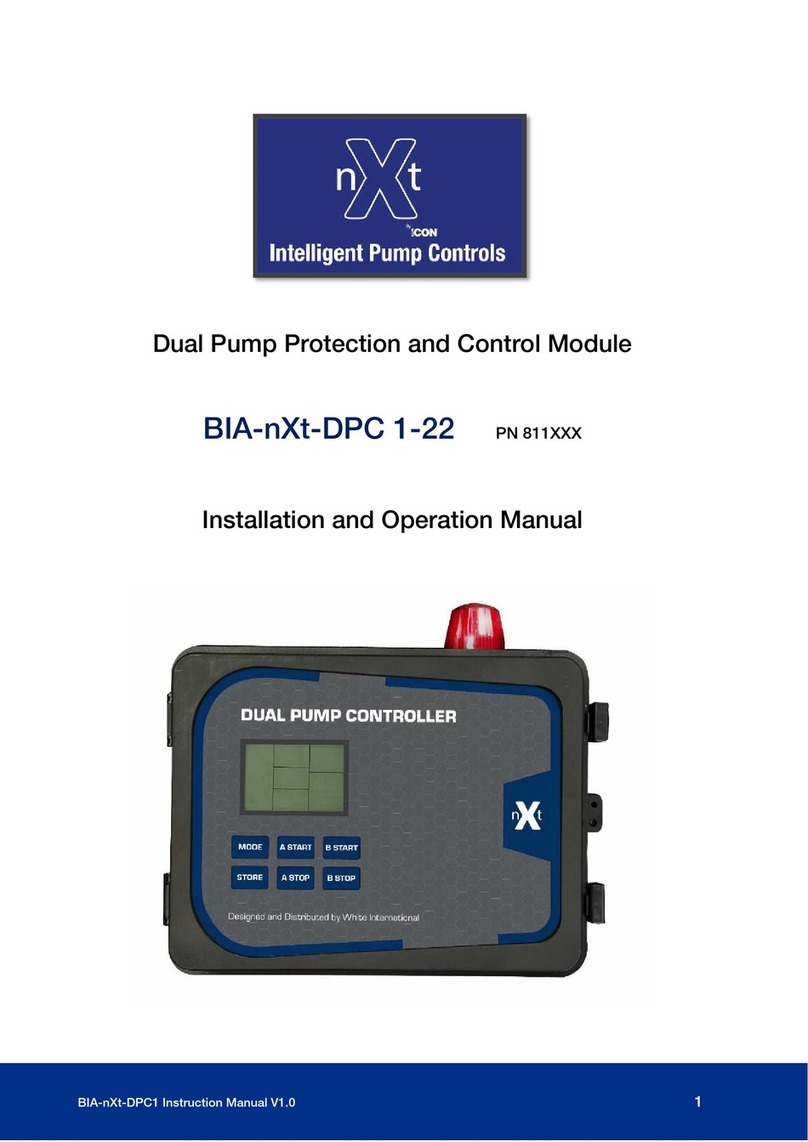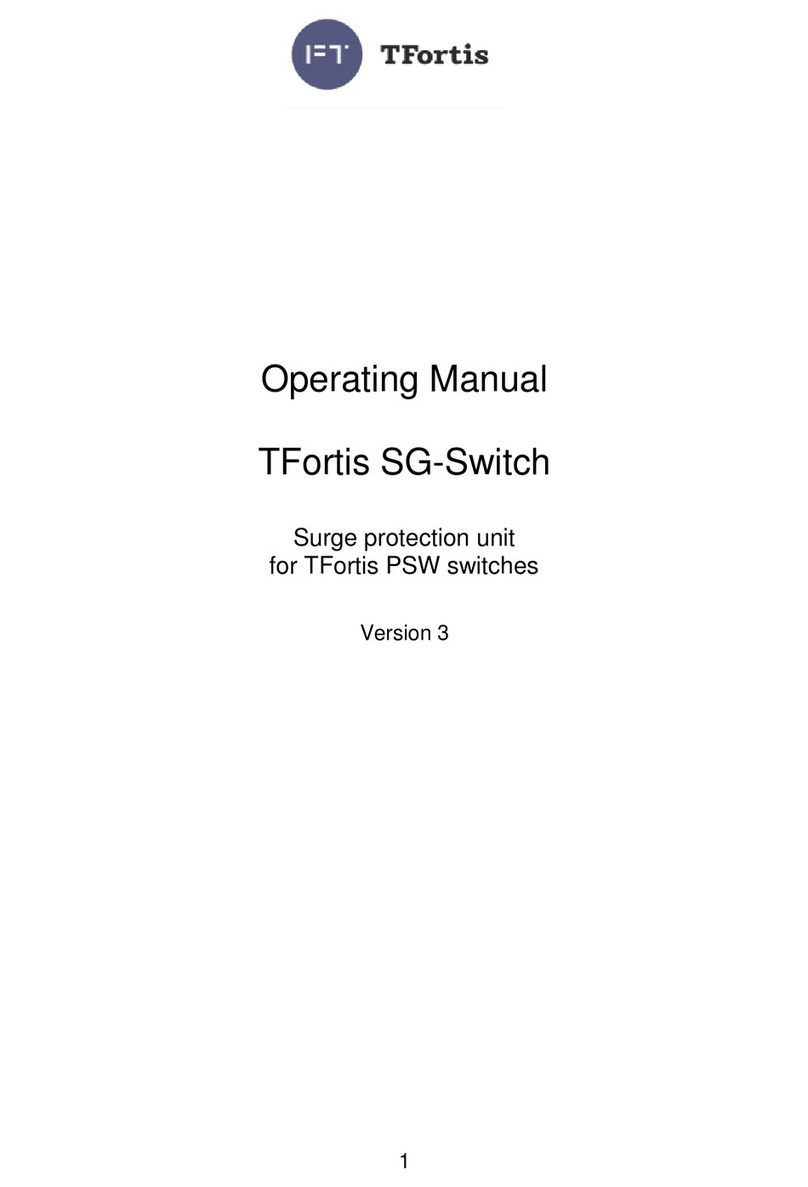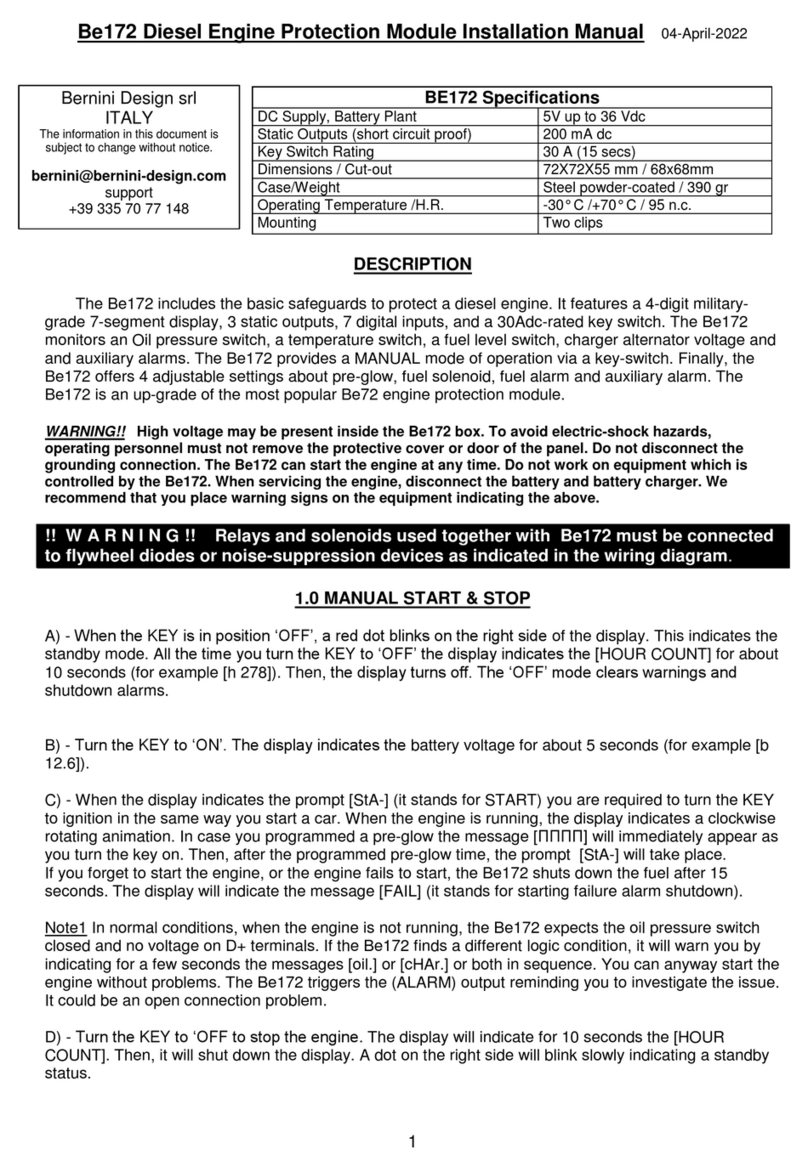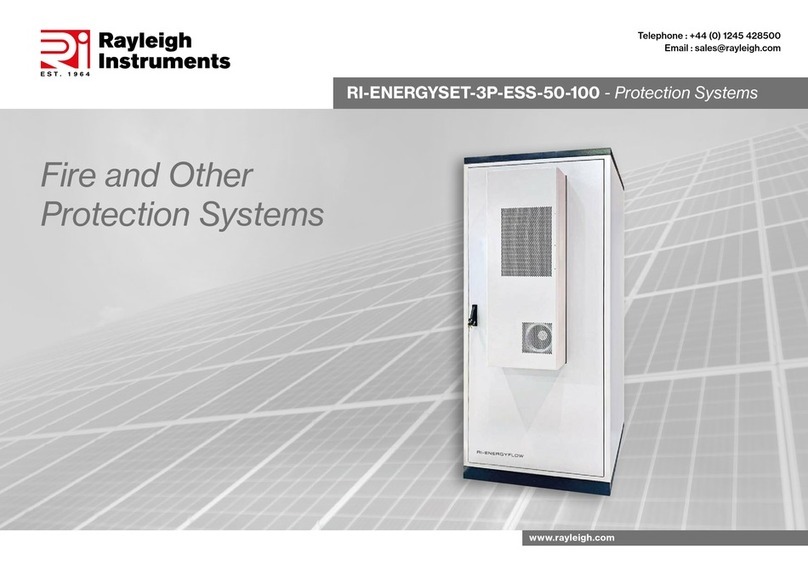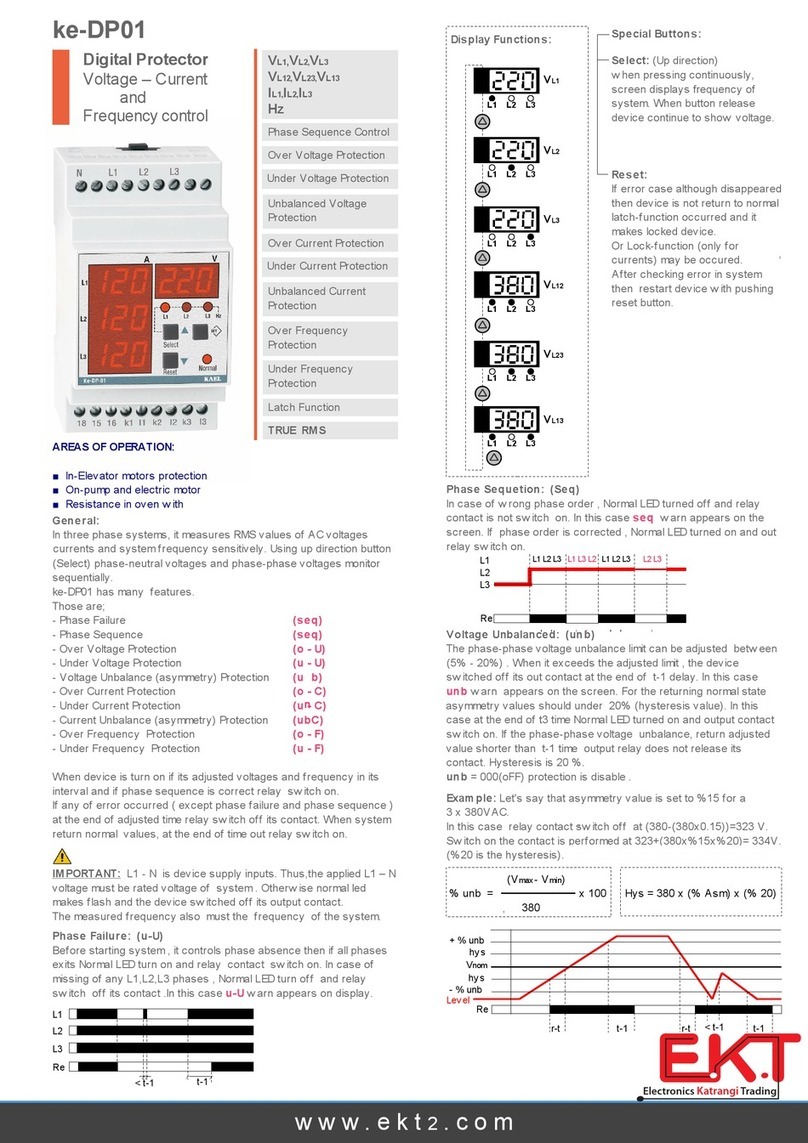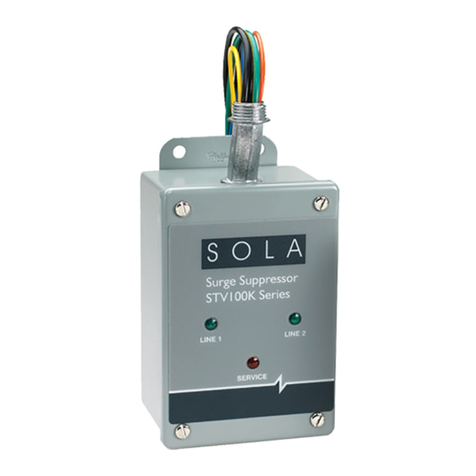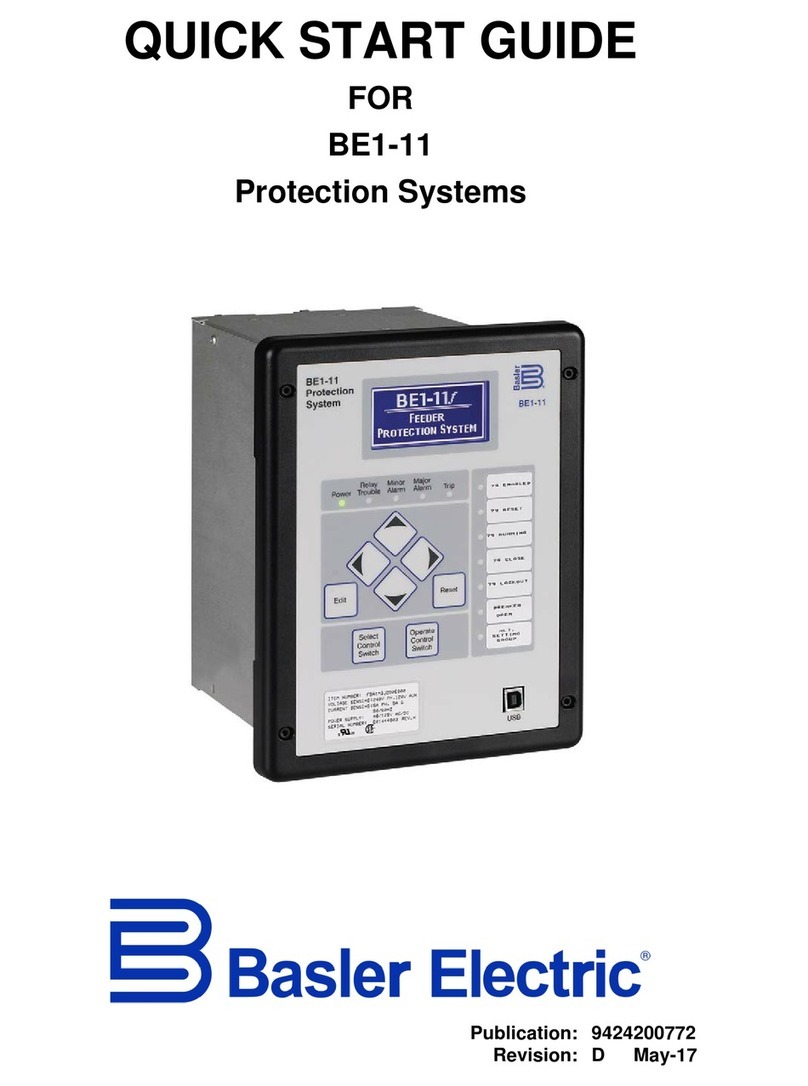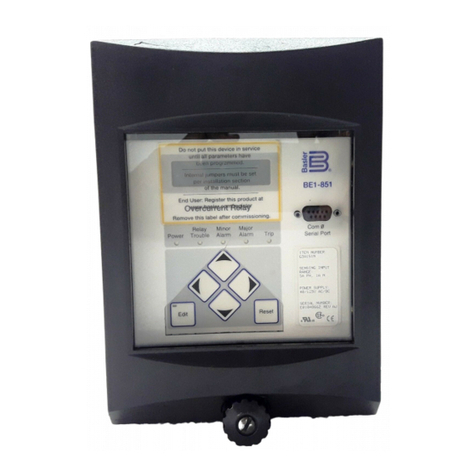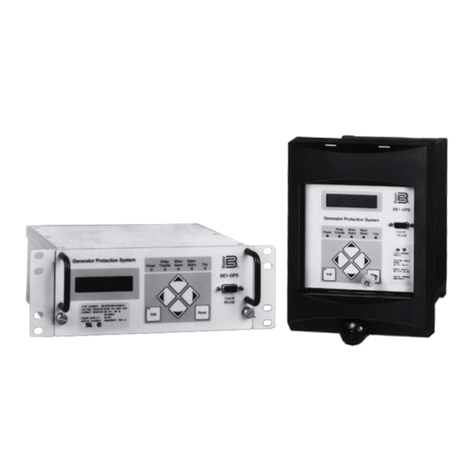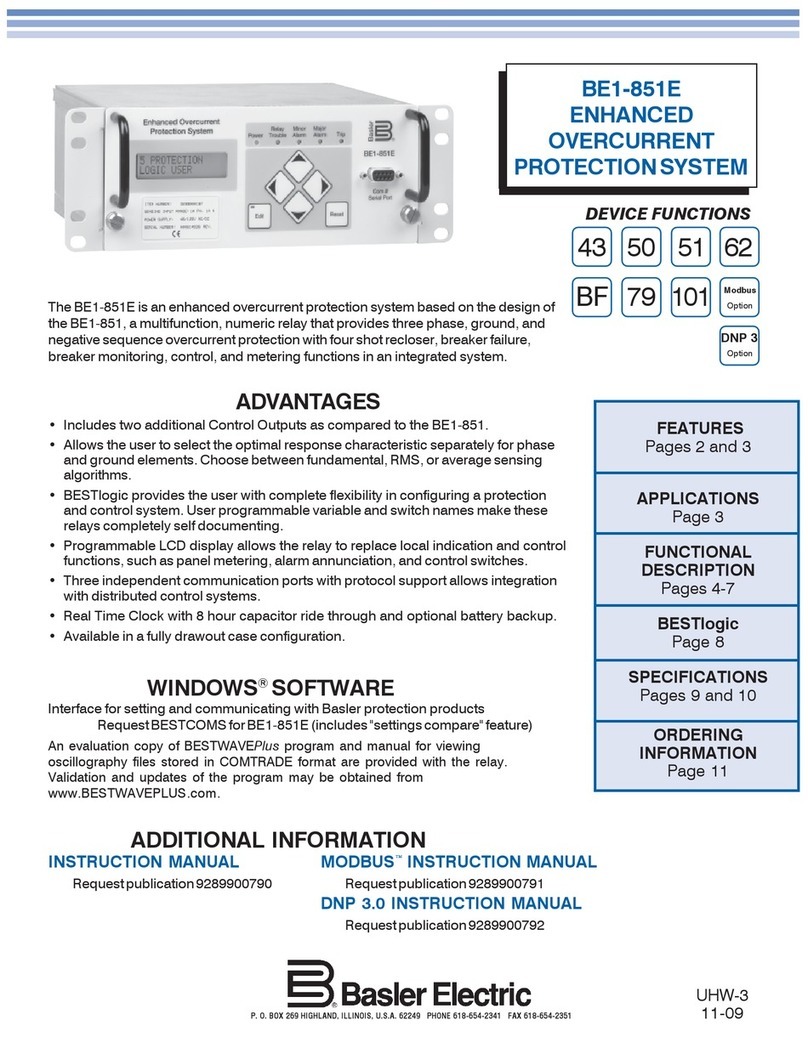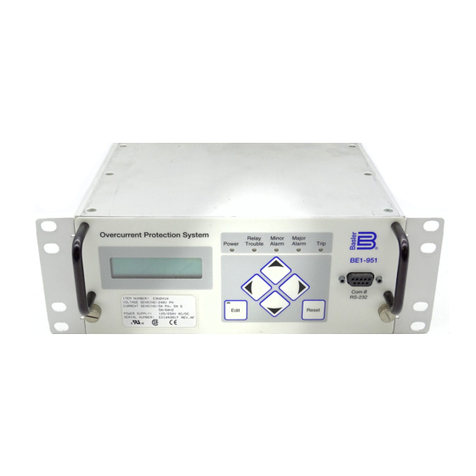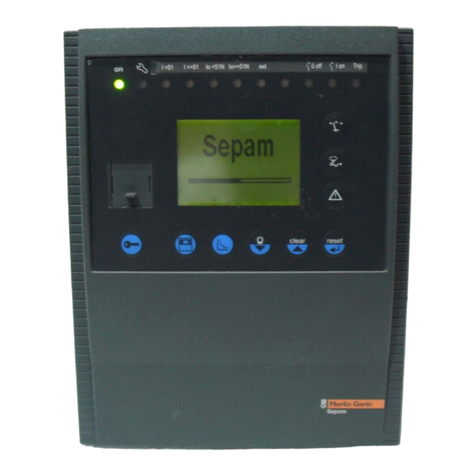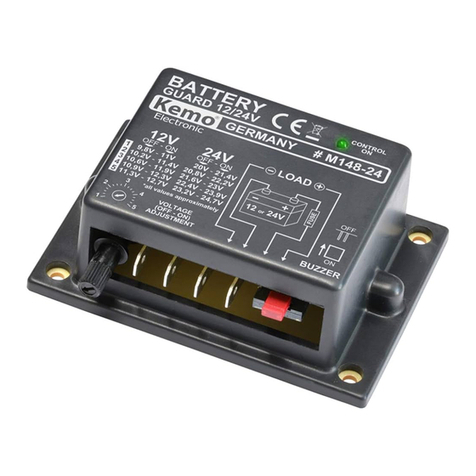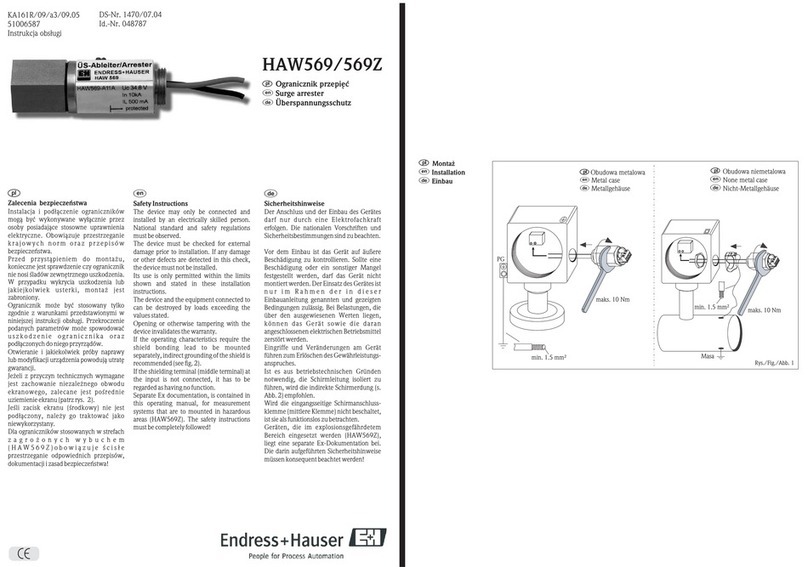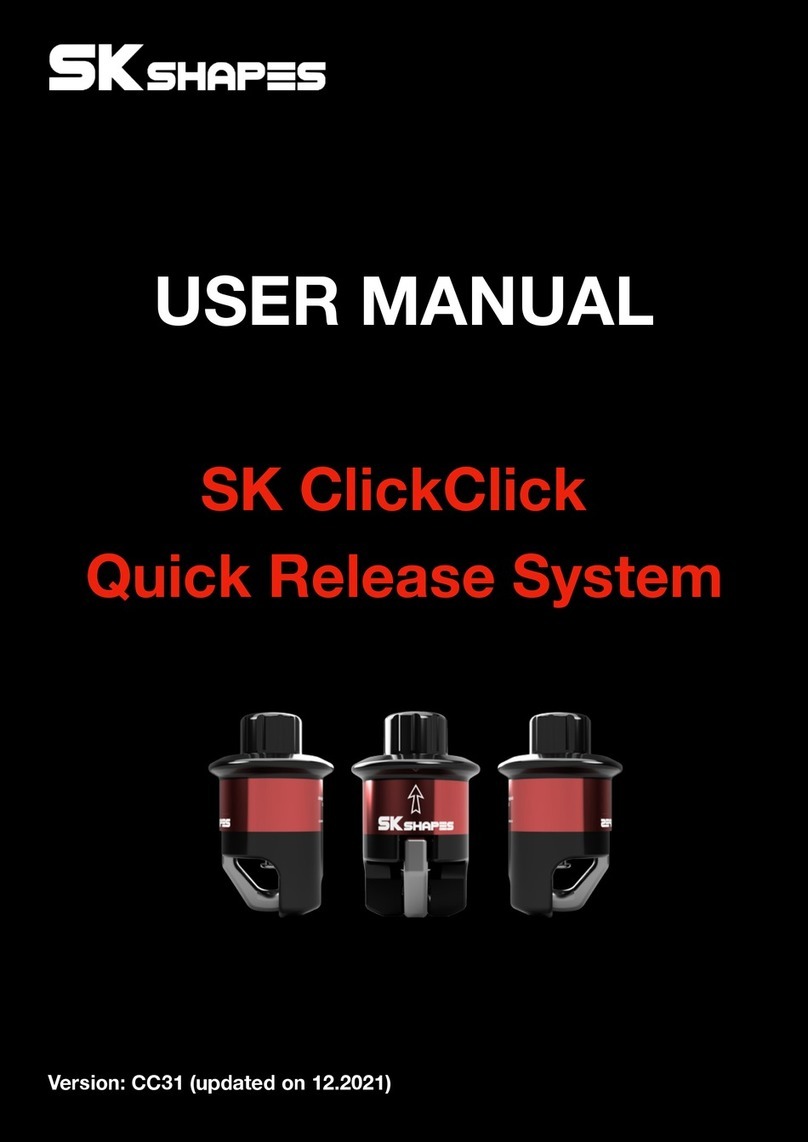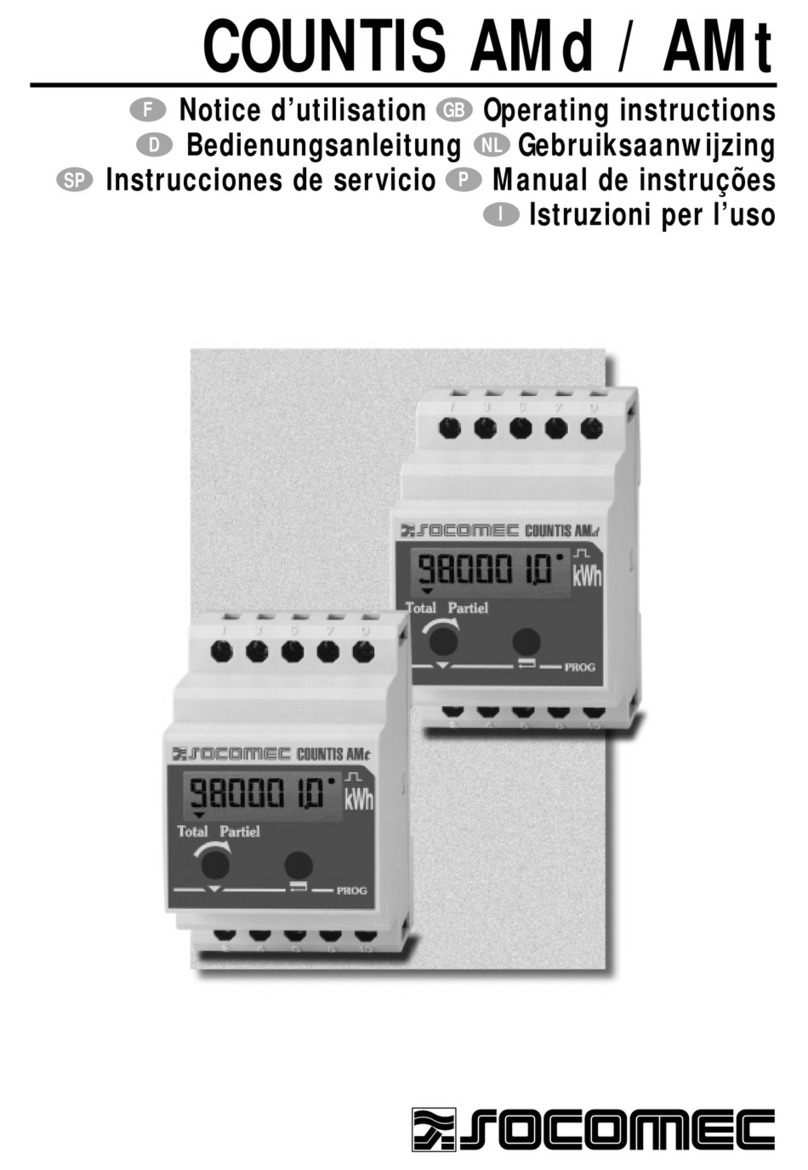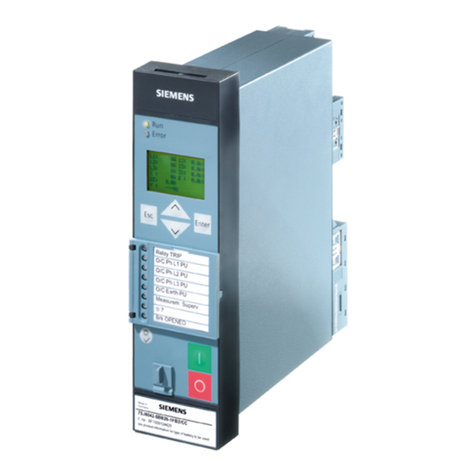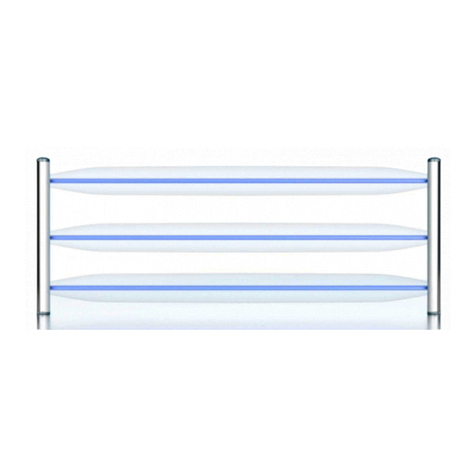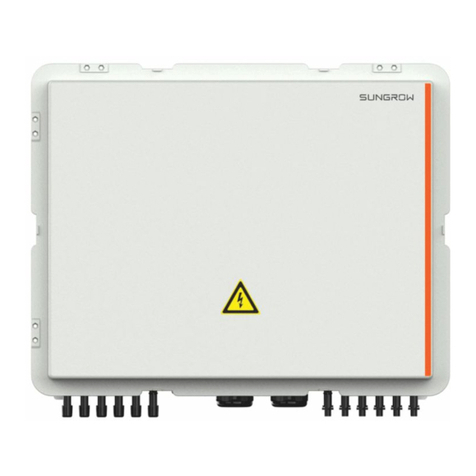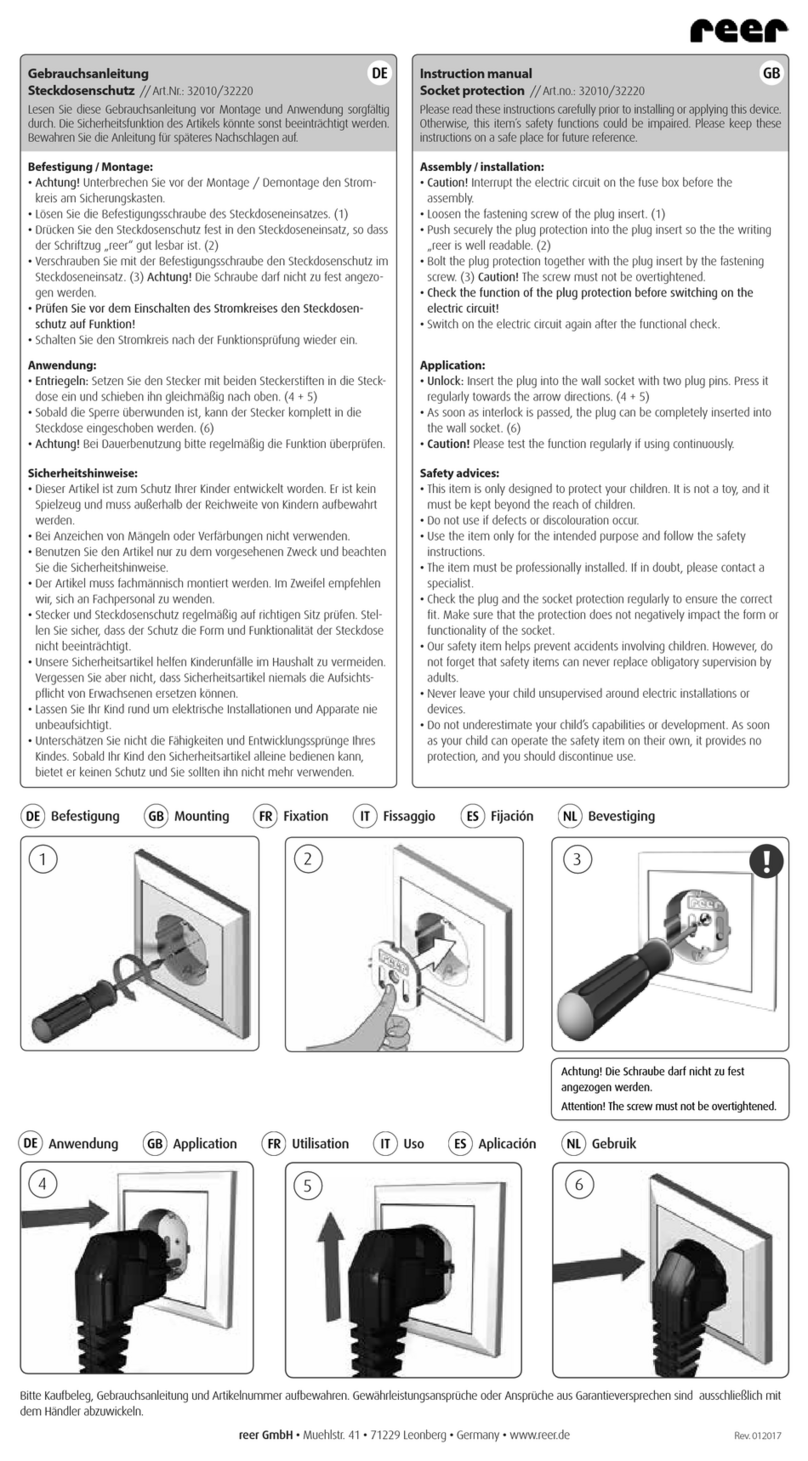
BE1-CDS220
2
FEATURES
PROTECTION
• Percentage Restrained Current Differential with
harmonic restraint: 87
• Percent Restraint characteristic can be percent of
maximum or percent of average through current.
• 2nd Harmonic sharing feature enhances security to
transformer inrush.
• Optional Restricted Ground Fault: 87ND (requires
optional independent ground input)
• Phase, Neutral, and Negative Sequence Instanta-
neous Overcurrent elements with settable time
delay: 50TP, 150TP, 250TP, 50TN, 150TN, 250TN,
50TQ, 150TQ, 250TQ
• Phase, Neutral, Ground, and Negative Sequence
Time Overcurrent elements: 51P, 151P, 251P, 51N,
151N, 251N, 51Q, 151Q, 251Q
• All U.S. and IEC timing curves plus user
programmable curve
• Responds to fundamental component of the power
system currents
• Minimizes transient overreach and overtravel on
overcurrent elements
• Breaker Failure protection function: BF
• Two general purpose logic timers: 62, 162
• Programmable logic using BESTlogic
• Four protection settings groups with external or
automatic (cold load pickup, and/or dynamic)
selection modes
CONTROL
• Virtual Breaker Control Switch—controllable from
both HMI and com. ports: 101
• Eight virtual selector switches—controllable from
both HMI and com. ports: 43, 143, 243, 343, 443,
543, 643, 743
INSTRUMENTATION
• Real time A, B, C phase, neutral and negative
sequence currents for each 3 phase CT input
circuit
• Real time ground current for optional independent
ground input
• Real time tap and phase compensated restraint
and operate currents for each differential element
• Real time 2nd and 5th harmonic restraint currents
for each differential element
• 1% meter accuracy down to 10% nominal current
REPORTS
• Current Demands for phase, neutral and negative
sequence for designated CT input —
magnitudes and time stamps are recorded for
today's peak, yesterday's peak, and peak since
reset (calculation settable for thermal, sliding
block average, and block average)
• Optional 4000 point log of demand reading
• Breaker operations counter and contact wear duty
• Transformer through-fault duty statistics
FAULT RECORDING
• 255 event sequence of events report with I/O and
alarm sub-reports
• Fault Reporting; 1 or 2 oscillography records per
fault report
• Fault summary reports; two most recent Fault
Summary Records saved to non-volatile memory
• Total number of fault and oscillography records
settable from 6 to 16
• Total of 240 cycles oscillography memory @ 24
samples/cycle
• COMTRADE format
• SER and Fault reporting doubled when Load
Profile option is selected
COMMUNICATIONS PORTS
• Three independent general purpose communica-
tion ports
- Front RS-232 ASCII communications
- Rear RS-232 ASCII communications
- Rear RS-485 ASCII, Modbus®, or other common
protocols
• IRIG-B time sync (unmodulated)
SELF TEST AND ALARM FUNCTIONS
• Relay Fail, major alarm and minor alarm LEDs,
and fail-safe alarm output contact
• Extensive internal diagnostics monitor all internal
functions of the relay
• More than 20 additional alarm points —
programmable for major or minor priority,
including:
- Phase demand overload alarm
- Neutral and negative sequence unbalance
demand alarms
- Three breaker alarm points—programmable for
slow trip, interruption duty threshold, or
operations counter
- Three transformer alarm points—programmable
for through fault operations or accumulated
through fault duty
SELF TEST AND ALARM FUNCTIONS
- Transformer differential alarm monitors Iop/Ires
characteristics to alarm if nearing trip condition
on load. Diagnostics provide indication of
polarity, phase shift and tap mismatch condi-
tions
- Trip circuit voltage and continuity monitor
- Programmable logic alarms
